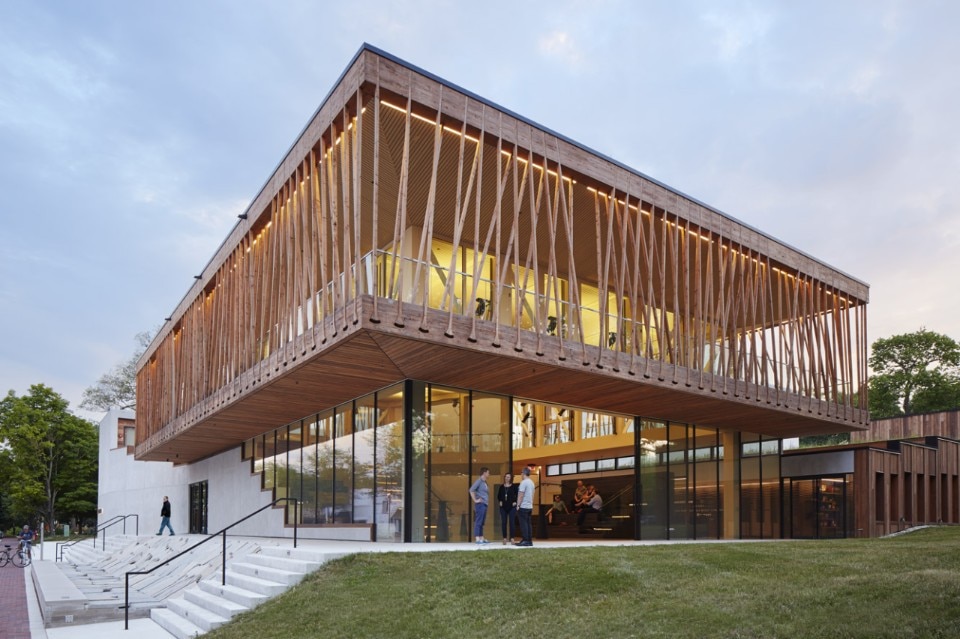If there is one element capable of identifying the current architectural season, whose evolution over the last century has exceeded the limits of pure formal language, that element is contemporary architecture’s capability to intercept and incorporate spatial dynamics, usage and interpretation. Within this framework operates Studio Gang, an architecture and urban planning practice founded in Chicago in 1997 and run by Jeanne Gang (Belvidere, Illinois, 1964).
This practice activates processes that are primarily focused on relations between individuals, communities and environments, delivering a heterogeneous and multifaceted body of work spanning different scales and typologies, reaching beyond architecture’s conventional boundaries.
Each building is designed to define more cohesive social processes, develop new materials, and interact with new urban landscapes: the roof of the Art Deco building where the studio is headquartered, for instance, has been transformed into a space where “wild nature” and “leisure” can converge (Studio Gang Sky Island, Chicago, 2017); the Arcus Centre for Social Justice Leadership in Kalamazoo (Michigan, USA, 2014), instead is based on a construction system employing wood as an effective and easy-to-read macro-Braille alphabet spelling out “low-tech, low-cost and sustainable”.
Defining a space dedicated to projects related to human rights and social justice, the Centre is designed to activate exchange and training projects for students, teachers, scholars, operators and the general public: a project based on the valorisation of daylight as a circadian vehicle favouring interaction.
A similar approach is reflected in the Writers Theatre in Glencoe (Illinois, USA, 2016) where the focus is not on accentuating the multiple relational energies, but rather on channelling them into an immersive and intimate connection between the actors and the audience, transforming the architecture into a device for the amplification of the literary experience itself.


